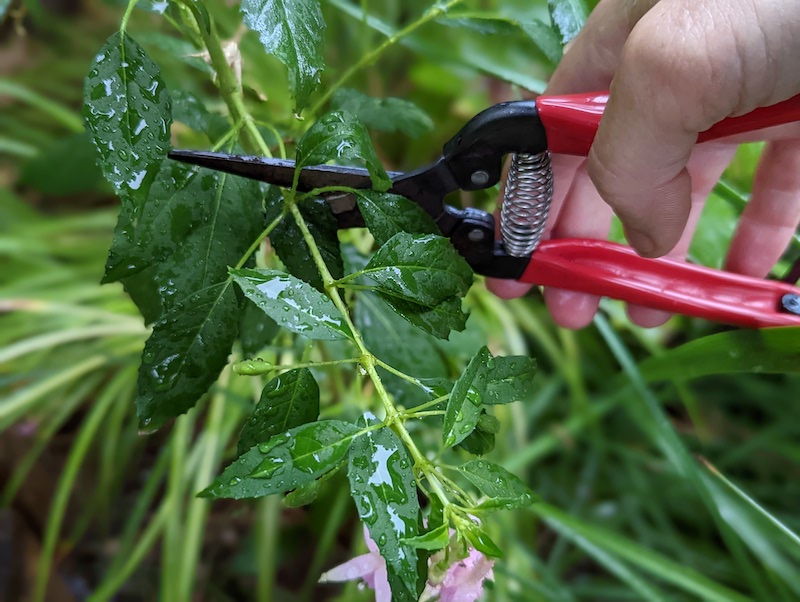Fuchsia is a heavy-blooming, tender perennial, often grown as an annual plant. There are three types of pruning that Fuchsia needs to bloom well, stay compact, and successfully overwinter in cold climates. Deadheading, pinching, and rejuvenation pruning need to be done at specific times in the year to maintain a healthy Fuchsia plant.

When to Prune Fuchsia
Fuchsia will need pinching from the very beginning of growth in the spring. Pinching out the growing tips and first flower buds helps the plant form dense branching. Deadheading is the removal of spent blooms to encourage more bud formation. Deadheading must be done weekly to keep the plant from producing seed. Rejuvenation pruning is necessary two times during the lifecycle of a Fuchsia.
Around mid-summer, Fuchsia may begin to slow in the production of flowers. The plants also tend to get leggy and a bit overgrown. Cutting the whole plant by half will encourage new, robust growth that will continue until fall. Fuchsia being overwintered in a frost-free dark spot will also need a rejuvenation pruning in the spring. Cut back the old top growth from the previous season to the basal new growth.

How to Prune Fuchsia
Step 1 - Pinching out new shoots
Pinch out the tips of new stems and the first flower buds in the spring. Pinch the growth above a set of leaves, ensuring no bare stems show. This encourages a dense branching and heavier bloom for the Fuchsia.
Step 2 - Deadheading spent flowers
As the flowers fade, snip them off to encourage new buds to form. Weekly, cut back the flower stems to a set of leaves. If the flowers are left on the plant, Fuchsia will put energy into seed production instead of blooming. This step extends the blooming cycle until fall.
Step 3 - Rejuvenation pruning at mid-summer
Rejuvenation is needed two times during the growing season. In mid-summer, Fuchsia may look leggy, and the flowering will decline. Make cuts above pairs of leaves or visible growth buds. Ensure the plant is well watered and fertilized with a formula for heavy-blooming plants. Within a short time, Fuchsia will begin vigorous new growth.
Step 4 - Rejuvenation pruning of over-wintered Fuchsia
As the new growth emerges, the previous year's top growth needs to be pruned back. Carefully prune the woody branches to just above the fresh, green shoots. Fuchsias bloom only on the current year's growth, and this hard pruning will help the plant remain dense and compact. Fuchsia can be overwintered in a cool, dark spot and then brought out to regrow the following spring.
Fuchsia Pruning Tips
- Deadhead regularly for continued blooming
- Pinch out the growing tips early on to force the plant to grow bushier and flower
- Rejuvenate the whole plant in mid-summer if the growth is slowing or seems too leggy
- Rejuvenate the whole plant as it comes out of hibernation in the spring
 |
Author Alison Cotsonas - Published 09-01-2022 |
